Contributed by Quotient Travel Planner
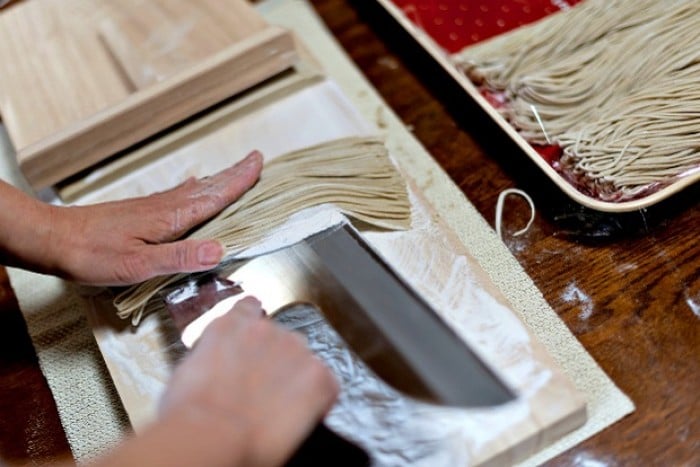 Image credit: CC BY-NC 2.0 (peter-rabbit, 2015)
Image credit: CC BY-NC 2.0 (peter-rabbit, 2015)
Tempura, chawanmushi, unagi, okonomiyaki — these Japanese terms shouldn’t sound unfamiliar to foodies versed in the art of savouring Japanese cuisine. And given the ubiquity of Japanese restaurants in Singapore, it seems that Singaporeans have an insatiable craving for food from the Land of the Rising Sun.
But for a country that has introduced hug pillows, maid cafes, capsule hotels and other bizarre creations to the world, you can always count on the Japanese to come up with interesting or innovative ways to spice up the food scene. Rather than content with just eating what lands on your plate, why not go hands-on with these fun foodie experiences? Itadakimasu!
Also read: What to Eat in Japan: 23 Must-Try Foods Other Than Sushi
1. Fish your own meal
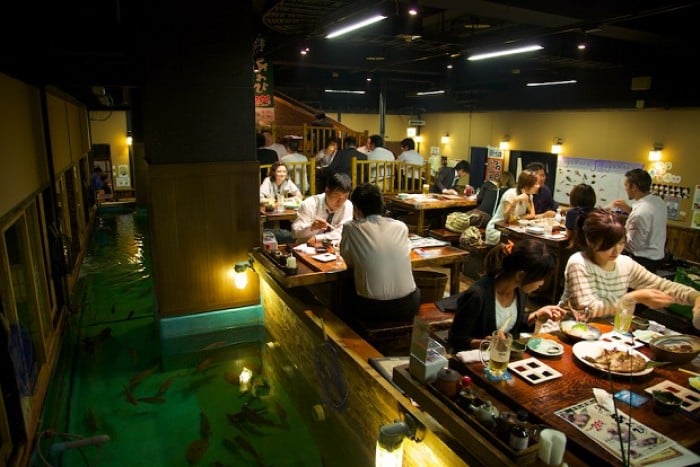 Tokyo’s Zauo lets you be a fisherman for a few hours by allowing you to catch your own fish for dinner. | Image credit: CC BY 2.0 (Thierry Draus, 2010)
Tokyo’s Zauo lets you be a fisherman for a few hours by allowing you to catch your own fish for dinner. | Image credit: CC BY 2.0 (Thierry Draus, 2010)
Situated in Tokyo’s Shinjuku, Zauo lets you be a fisherman for a few hours by allowing you to catch your own fish for dinner. Red snappers, sea bream, lobsters, eels and more swim around a replica wooden ship furnished with dining tables, where you are given a fishing rod and bait to catch your own fish. After reeling in your live catch, the fish is handed over to the chef who will prepare your meal according to your preference — deep-fried, grilled, sliced sashimi, sushi-style or even as a combination!
Adding on to the satisfaction of a successful catch is a meal discount given to all who fished their own. Those with no luck, or rather tug, need not feel disheartened as you can still order fish off the menu. For little ones, there’s even a sushi-making workshop with a “diploma” awarded upon completion.
2. Carve your own chopsticks
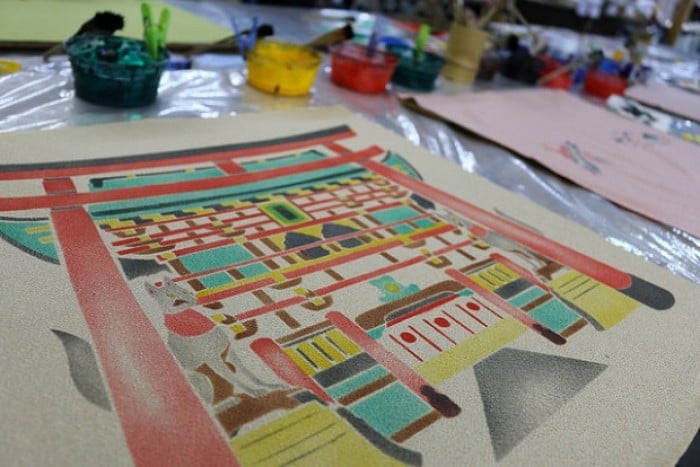 In the ancient city of Kyoto you can attend a workshop to learn to carve your chopsticks from a piece of Japanese cedar wood. | Image credit: CC BY-ND 2.0 (Ryo Fujita, 2015)
In the ancient city of Kyoto you can attend a workshop to learn to carve your chopsticks from a piece of Japanese cedar wood. | Image credit: CC BY-ND 2.0 (Ryo Fujita, 2015)
A familiar sight on the dining tables of most Asian homes, the chopstick is often not accorded the same amount of attention as the food on one’s plate and, in our to-go culture, even discarded after use. But what if you could make your very own set of chopsticks?
Within a wooden townhouse in the ancient city of Kyoto near the Nijō Castle, Marumsu Nishimuraya combines this nondescript utensil with the traditional art of dyeing known as Kyo-Yuzen that is used to fashion kimonos. A twice-daily workshop (9am and 2pm; ¥3,240) is held here, where you learn to carve your chopsticks from a piece of Japanese cedar wood and varnish them for a smooth finish. You then harness your creative side, using paper stencils and dye to design a carrying case for your chopsticks. After which, you can enjoy waffles or a simple lunch using your newly-fashioned chopsticks at the studio’s café.
3. Be a soba chef
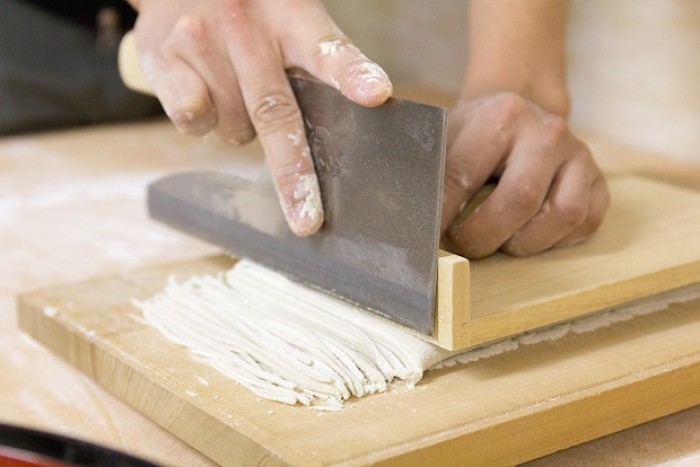 A professional chef at the Tsukiji Soba Academy near the famous Tsukiji Fish Market in Tokyo will teach foodies how to make soba. | Image credit: CC BY 2.0 (t-mizo, 2012)
A professional chef at the Tsukiji Soba Academy near the famous Tsukiji Fish Market in Tokyo will teach foodies how to make soba. | Image credit: CC BY 2.0 (t-mizo, 2012)
Whether it is served cold with a dipping sauce or in a hot broth with toppings ranging from raw egg to wild vegetables to fried tempura, soba is a perennial favourite in Japan. Aspiring cooks or those who simply cannot get enough of buckwheat noodles can now learn to make soba from a professional chef at the Tsukiji Soba Academy near the famous Tsukiji Fish Market in Tokyo.
At his school, master chef Akila Inouye receives locals and tourists alike; participants are treated to a cooking demonstration followed by a tasting session and a hands-on lesson where they learn make the noodles from scratch. While one is unlikely to be proficient enough to run a soba restaurant after a 3.5-hour lesson (¥30,000 total for one to three persons and additional ¥10,000 for each additional participant up to 20 people), you should at least be able to whip up your own bowl of soba at home when you feel like it. Or if you think you have the makings of a soba master chef, longer 10-day courses are also available.
4. Discover ramen at a museum
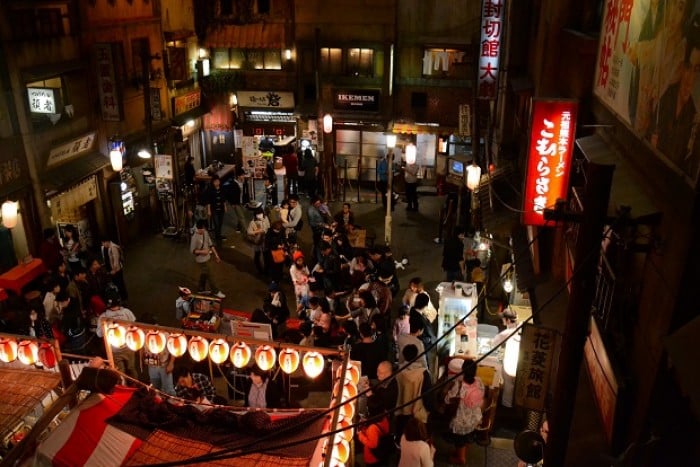 A tour of the Shin-Yokohama Raumen Museum will reveal interesting facts about the history of ramen and its production process. | Image credit: Korkuslung
A tour of the Shin-Yokohama Raumen Museum will reveal interesting facts about the history of ramen and its production process. | Image credit: Korkuslung
Though it calls itself a “museum”, the Shin-Yokohama Raumen Museum (admission ¥310 for adults and ¥100 for children aged 6 to 12 years or seniors aged 60 years and above) is closer to a theme park of sorts centred on the famous yellow noodles. Besides learning about the history of ramen and its production process, the museum also takes you back in time with a life-size replica of buildings and streets in Showa Japan back in 1958, when ramen was just starting to get popular.
Even for foreigners, it is hard to miss the air of nostalgia as you shop for old-fashioned snacks and toys from the old shopping street and, not forgetting, having your fill of various ramen varieties from the small ramen restaurants around the replica train station. Go on a mini gourmet tour as you sample the various kinds of ramen unique to regions such as Hokkaido and Kyushu sold by actual famous brand-name ramen restaurants. The ramen even come in mini servings so you can afford to try more!
5. Create fake food
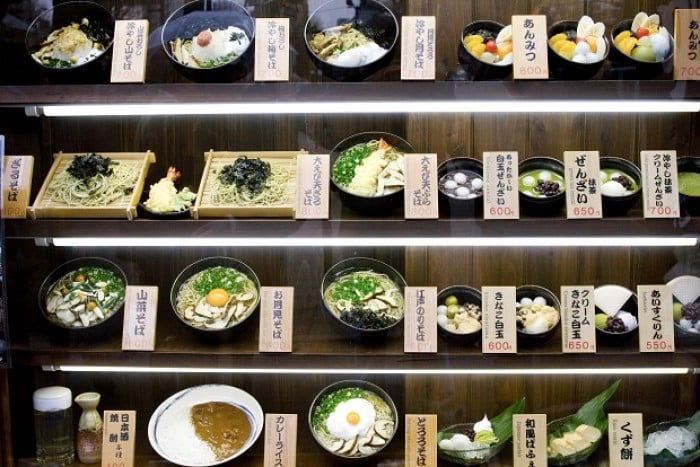 In Japan, travellers can admire unique shop front displays of realistic pieces of fake food including bowl of ramen and bentos.
In Japan, travellers can admire unique shop front displays of realistic pieces of fake food including bowl of ramen and bentos.
Synonymous with Japanese restaurants are the unique shop front displays of fake bowls of ramen and bentos that look almost like the real McCoy. From replica sashimi, sushi, teriyaki chicken to ice-cream, you can get almost any kind of these figurines from the Ganso Shokuhin Sample-ya showroom, aptly situated at Kappabashi “Kitchen Town” in Tokyo — a district in Asakusa selling anything and everything you need for the kitchen. The realistic pieces of fake food make for a dream addition to every child’s masak masak collection; you can also find miniature pieces as part of mobile phone straps, magnets and key chains. Upstairs, you can try your hand at making your own fake tempura and lettuce using coloured wax (¥2,160; advanced booking required). If spaghetti floating in mid-air sounds like an attractive décor item for your home, you can also buy a DIY set to take home; English instructional leaflets can be requested from the cashier.
Also read: 8 Must-Try Japanese Snacks That Are Also Muslim-Friendly
Fake food enthusiasts can also pay homage at Gujo Hachiman in Gifu Prefecture, said to be the mecca of replica food — the 10 such factories here produce 70% of Japan’s total sample food output. One of them, Sample Village Iwasaki, has an exhibition area where you can marvel over intricate samples as well as pose with giant food replicas; hands-on workshops are held here daily.




